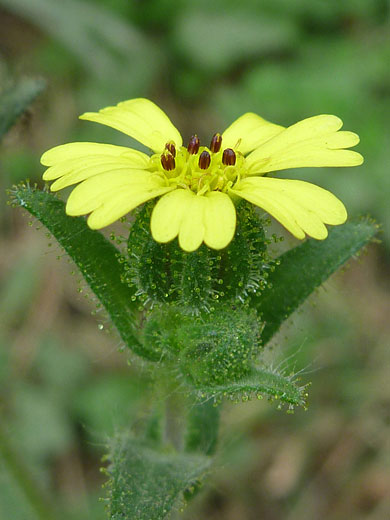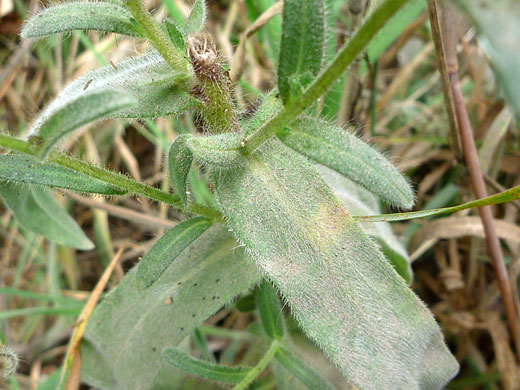Common names:
Coast tarweed, Chilean tarweed
Family:
Scientific name:
Madia sativa
Main flower color:
Range:
The Pacific states, and small areas of Idaho and Montana
Height:
Usually between 1 and 3 feet; sometimes more
Habitat:
Open, grassy locations, often near the coast; up to 3,000 feet
Leaves:
Linear to oblong or lanceolate, up to 7 inches long and just less than an inch wide
Season:
May to October
Stem, leaves and phyllaries of madia sativa are covered by long, thin, white hairs, and also by quite long glandular hairs - these are a little thicker, topped by a resinous gland colored yellow, purple or black. Stems branch a few times and can reach a height of seven feet, though one to three feet is more common.
Flowerheads usually have between 8 and 13 greenish-yellow (sometimes purplish) ray florets, partly divided at the tip into three lobes, and 11 to 14 disc florets, all yellow apart from large, dark purple anthers. The involucre is wider at the base than the top, enclosed by green, glandular phyllaries whose tips may be bent back somewhat.
Plants are most common close to the Pacific coast, in California, Oregon and Washington, and north to Alaska, but are also found inland, at low to medium elevations.
Flowerheads usually have between 8 and 13 greenish-yellow (sometimes purplish) ray florets, partly divided at the tip into three lobes, and 11 to 14 disc florets, all yellow apart from large, dark purple anthers. The involucre is wider at the base than the top, enclosed by green, glandular phyllaries whose tips may be bent back somewhat.
Plants are most common close to the Pacific coast, in California, Oregon and Washington, and north to Alaska, but are also found inland, at low to medium elevations.
All Contents © Copyright The American Southwest | Comments and Questions | Contribute | Site Map





